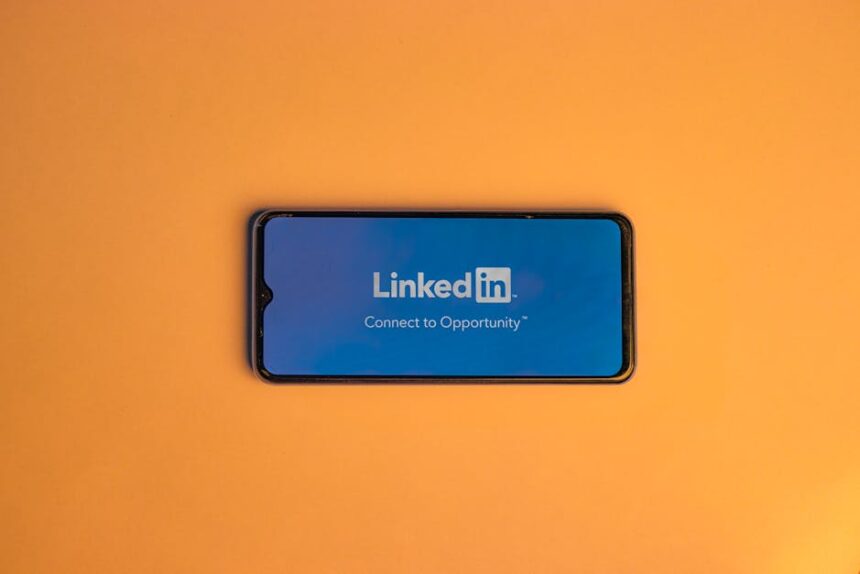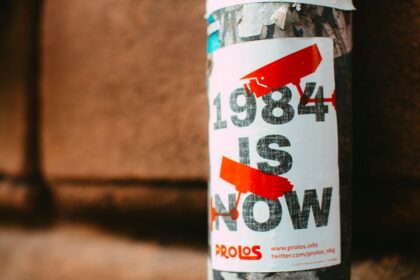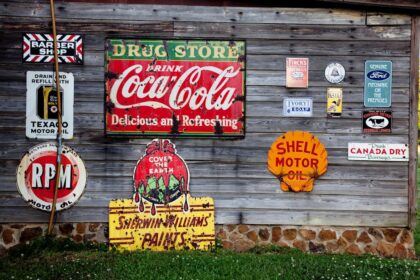Understanding the Foundation for Scaling LinkedIn Ad Performance
Scaling LinkedIn ad performance is not merely about increasing your budget; it’s a strategic evolution that requires a robust foundation. Before contemplating significant budget increases, it’s paramount to ensure your current campaigns are optimized, your tracking is immaculate, and your understanding of your target audience and core metrics is crystal clear. A rushed approach to scaling without this foundational work often leads to diminishing returns, wasted ad spend, and frustration.
Pre-scaling Checklist: Establishing a Solid Base
Before committing more resources, meticulously review these critical areas:
- Flawless Tracking and Attribution: This is the bedrock of any successful scaling effort. Ensure your LinkedIn Insight Tag is installed correctly across all relevant pages of your website. Verify that event tracking (page views, form submissions, purchases, key downloads) is firing accurately. Use LinkedIn’s Conversion Tracking report to confirm data flow. Beyond LinkedIn’s native tracking, integrate your CRM (Customer Relationship Management) system for closed-loop reporting. Are you attributing conversions correctly – last-touch, multi-touch, or a custom model? Without accurate data, you cannot make informed scaling decisions. Understand the difference between lead quality and lead quantity, and how to track both through your CRM integration. This might involve custom UTM parameters, hidden form fields, or direct API integrations between LinkedIn Lead Gen Forms and your CRM.
- Deep Audience Understanding and Segmentation: You cannot scale effectively if you don’t truly understand who you’re targeting and why they convert. Beyond basic demographics, delve into professional interests, seniority levels, company sizes, and industries that yield the best results. Have you segmented your existing audiences based on their engagement with your brand (website visitors, video viewers, lead form openers)? Identify your top-performing audience segments. These segments will be your initial candidates for budget increases and lookalike expansion. Consider conducting a thorough audience analysis from your existing customer base to uncover new targeting opportunities within LinkedIn’s extensive professional network.
- Validated Creative Library: Scaling demands a diverse and effective creative arsenal. You need more than one or two winning ads. You require a library of high-performing images, videos, carousels, and document ads that resonate with various segments of your target audience. Have you systematically A/B tested your creatives to identify winning headlines, ad copy, visuals, and calls-to-action (CTAs)? Understand which creative formats perform best for different objectives (e.g., video for awareness, document ads for lead generation). A lack of fresh, engaging creative is a common bottleneck to scaling, as ad fatigue quickly sets in. Build a pipeline for continuous creative development and testing.
- Budget Allocation Strategy: How is your current budget distributed across campaigns and ad sets? Is it aligned with your business objectives? Before scaling, identify campaigns that consistently outperform others. These are your “winners” that deserve more investment. Conversely, be prepared to reallocate budget from underperforming campaigns. A clear understanding of your current budget’s efficiency will inform where additional funds can yield the highest return. This isn’t just about spending more; it’s about spending smarter.
- Clear KPI Definition and Performance Baselines: What defines success for your LinkedIn ad campaigns? Is it Cost Per Lead (CPL), Cost Per Qualified Lead (CPQL), Cost Per Opportunity (CPO), or Return on Ad Spend (ROAS)? Define your key performance indicators (KPIs) and establish baseline performance metrics for your current campaigns. Scaling too aggressively without understanding your current efficiency can dilute your performance. For instance, if your current CPL is $50, what’s an acceptable CPL at 2x or 3x the budget?
- Server-Side Tracking (Optional but Recommended for Scale): For advanced advertisers, implementing server-side tracking (e.g., via Google Tag Manager Server-Side or a dedicated Customer Data Platform like Segment) can significantly improve data accuracy and resilience against browser tracking prevention. This ensures a more complete data set for LinkedIn’s algorithms to optimize against, especially crucial when dealing with larger budgets and more complex funnels.
Why Scaling Fails: Common Pitfalls to Avoid
Many advertisers attempt to scale LinkedIn ads only to encounter disappointing results. Understanding these common missteps can help you navigate the scaling journey successfully:
- Impatience and Over-Aggressive Budget Increases: The most frequent mistake is increasing budgets too rapidly. LinkedIn’s algorithm needs time to learn and optimize. Sudden, large budget spikes (e.g., doubling overnight) can disrupt the learning phase, leading to inefficient spend and inflated costs. Think incremental.
- Lack of Data and Blind Optimization: Scaling without reliable tracking and insufficient conversion data is akin to flying blind. Without accurate insights into what’s working (and what’s not), you’re guessing, not optimizing. This leads to misallocation of resources.
- Ignoring Ad Fatigue: As you increase impressions and reach, your audience will see your ads more frequently. If your creative isn’t refreshed, ad fatigue sets in, leading to declining click-through rates (CTRs) and rising costs. Scalability demands a robust creative testing and refresh strategy.
- Not Segmenting Audiences and Creatives: A one-size-fits-all approach rarely scales. Different audience segments respond to different messages. Failing to tailor your creative and targeting for specific segments limits your ability to expand effectively.
- Focusing Solely on Top-Funnel Metrics: While impressions and clicks are important, scaling should always be tied to bottom-line business impact. If you’re only optimizing for clicks and ignore the cost per qualified lead or pipeline generated, you might be scaling inefficiently.
- Disregarding the Learning Phase: LinkedIn campaigns, especially those with automated bidding, enter a “learning phase” after significant changes (new ad sets, large budget increases). During this period, performance can be volatile. Prematurely pausing or making drastic changes before the algorithm has fully learned can hinder long-term performance.
- Underestimating Bid Strategy Impact: Choosing the wrong bid strategy for your objective and budget can severely limit scaling potential. Manual bidding might be too restrictive, while certain automated strategies might spend too quickly without proper constraints.
Defining “Scale”: Beyond Just Budget
True scaling on LinkedIn encompasses more than simply pouring more money into existing campaigns. It involves a holistic approach to expanding your impact, reaching new qualified audiences, and generating more meaningful business outcomes.
- Scaling Reach: Expanding your campaign’s reach to new, relevant audiences that haven’t yet seen your message. This might involve broader targeting, lookalike audiences, or exploring new ad formats.
- Scaling Efficiency: Maintaining or improving your Cost Per Acquisition (CPA) or Cost Per Lead (CPL) even as your budget increases. This is the ideal scenario, showing your campaigns are becoming more effective.
- Scaling Quality: Not just generating more leads, but generating more qualified leads or opportunities that move through your sales pipeline. This often means refining targeting and messaging to attract higher-intent prospects.
- Scaling Pipeline & Revenue: Ultimately, scaling should translate into tangible business growth – more sales opportunities, closed deals, and revenue. This requires strong integration with sales and a clear understanding of the full customer journey.
- Scaling Innovation: Continuously testing new ad formats, bidding strategies, and audience segments to unlock new avenues for growth. Stagnation is the enemy of scale.
By laying this meticulous foundation, you establish a controlled and data-driven environment for scaling. This preparatory work mitigates risks, maximizes efficiency, and sets the stage for exponential growth on the LinkedIn advertising platform.
Strategic Pillars for Scalable LinkedIn Campaigns
Once your foundational elements are solid, the next phase involves strategically expanding your efforts across key dimensions. These pillars – audience, creative, bidding, and budget – are intertwined and must be optimized in concert to achieve sustainable scaling.
1. Audience Expansion: Reaching Beyond Your Core
Effective scaling necessitates reaching new, qualified prospects without diluting lead quality.
- Leveraging Lookalike Audiences: This is often the most powerful tool for expanding reach while maintaining relevance.
- Source Audiences for Lookalikes: Don’t just rely on website visitors.
- Customer Lists (CRM Data): Upload highly qualified customer lists (e.g., past purchasers, high-value clients, won opportunities). LinkedIn matches these to profiles, and lookalikes are built from these matched profiles. Aim for a match rate of 80% or higher for optimal results. These often yield the highest quality lookalikes.
- High-Intent Website Visitors: Segment website visitors who have completed specific valuable actions (e.g., visited product pages, pricing pages, downloaded a specific piece of content, viewed a demo). Exclude generic home page visitors if they don’t indicate high intent.
- LinkedIn Engagement Audiences: Lookalikes from video viewers (90%+ completion), Lead Gen Form openers/submitters, or Company Page followers. These can indicate strong existing interest.
- Lookalike Match Rates: Experiment with different match rates (e.g., 3%, 5%, 8%, 10%). A 3% match rate will be tighter and more similar to your source audience, while a 10% will be broader, reaching more unique users, but potentially at a lower relevance. Test different percentages to find the sweet spot between reach and quality.
- Combining Lookalikes with Other Targeting: Layer your lookalike audiences with specific professional characteristics (job titles, industries, seniority, company size) to further refine and ensure relevance, especially if your initial lookalike feels too broad.
- Source Audiences for Lookalikes: Don’t just rely on website visitors.
- LinkedIn Audience Network: While not always the first choice for B2B, the LinkedIn Audience Network (LAN) can provide significant reach expansion at potentially lower costs.
- Strategic Use: Use LAN primarily for awareness or top-of-funnel campaigns where reach and impressions are key.
- Careful Monitoring: Monitor performance closely. The quality of traffic can vary significantly compared to on-LinkedIn placements. Exclude low-performing websites or app categories.
- Specific Campaigns: Consider creating separate campaigns or ad sets specifically for LAN to control budget and monitor performance independently.
- Third-Party Data Integrations (via Data Providers): For very large-scale or niche targeting, explore integrations with LinkedIn’s approved data partners (e.g., Liveramp, Oracle). These allow you to onboard your proprietary first-party data securely and match it against LinkedIn profiles, then build lookalikes or target directly. This is an advanced strategy for mature advertisers.
- Account-Based Marketing (ABM) List Expansion: If you’re running ABM campaigns, once you’ve exhausted your initial target account list, expand by:
- Similar Accounts: Use LinkedIn’s “Account Targeting” features to find companies similar to your existing target accounts based on industry, size, and growth.
- New Decision-Makers: Target new job titles or seniority levels within your existing target accounts, or within your expanded similar accounts.
- Leveraging LinkedIn’s Native Targeting Robustly:
- Job Titles & Seniority: Go beyond generic titles. Research specific common titles for your target persona. Use “OR” logic for related titles. Consider multiple seniority levels (e.g., Director, VP, C-Suite) for a comprehensive approach.
- Skills & Interests: LinkedIn’s skill targeting can be highly effective. Combine relevant skills with job functions or industries. Look at your existing customers’ common skills.
- Company Targeting: Target companies by size, industry, or specific company names. For scaling, broaden your company size ranges or explore adjacent industries.
- Demographic & Firmographic Expansion: Systematically test expanding geographic regions (e.g., from specific states to entire countries), company sizes (e.g., from 500-1000 employees to 250-500 AND 1000-5000), or industries (e.g., from “Software” to “Information Technology & Services”). Do this incrementally and measure impact.
2. Creative Diversification & Iteration: Beating Ad Fatigue
Ad fatigue is a primary limiter of scale. A varied, high-performing creative strategy is essential.
- Ad Formats for Scaling: Don’t stick to just one.
- Single Image/Video Ads: Versatile and effective. Scale by creating multiple variations of headlines, body copy, and visuals/videos that convey similar messages differently.
- Carousel Ads: Excellent for storytelling, showcasing multiple product features, or addressing different pain points in a single ad. Scale by creating carousels targeting different stages of the buyer journey or highlighting different value propositions.
- Video Ads: High engagement potential. Scale by producing short, impactful videos (15-30 seconds for top-of-funnel, 60-90 seconds for deeper dives), testimonials, or explainer videos. Test different video lengths and CTAs.
- Document Ads (PDF/SlideShare): Great for lead generation, offering valuable gated content (e.g., whitepapers, ebooks, case studies) directly within the feed. Scale by creating multiple content offers for different audience segments.
- Lead Gen Forms: Integrate directly with all ad formats to streamline conversion. Essential for scaling lead volume.
- Message-Market Fit at Scale: Your message must resonate with each expanded audience segment.
- Audience-Specific Copy: Don’t use the same copy for a C-suite executive audience as you would for a junior manager. Tailor language, pain points, and benefits.
- A/B Testing Methodologies: Systematically test elements:
- Headlines: Short, punchy, problem-solution, benefit-oriented.
- Ad Copy: Long vs. short, feature-focused vs. benefit-focused, different tones of voice.
- Visuals: Stock photos vs. custom graphics, team photos, product screenshots, animated GIFs.
- CTAs: “Learn More,” “Download Now,” “Get a Demo,” “Register.”
- Dynamic Ads (if applicable): LinkedIn’s Dynamic Ads (e.g., Follower Ads, Spotlight Ads) automatically pull profile information for personalization. While not as customizable as standard ads, they can offer a scalable way to increase followers or drive traffic.
- User-Generated Content (UGC) & Testimonial Ads: Authentic content often outperforms polished corporate ads.
- Leverage Customer Reviews/Quotes: Turn positive testimonials into compelling ad copy or visuals.
- Employee Advocacy: Encourage employees to share company content, which can be amplified.
- Case Study Snippets: Highlight real-world success stories.
3. Bidding Strategies for Scale: Navigating the Auction
Your bidding strategy directly impacts your ability to scale efficiently.
- Manual vs. Automated Bidding:
- Manual Bidding (Max CPC, Max CPM): Offers maximum control over spend and cost. Useful for precise cost management or when you have a very clear CPA target. Can be more challenging to scale rapidly, as you’re manually adjusting bids. Best for mature campaigns with predictable performance.
- Automated Bidding:
- Maximum Delivery (Recommended for Scale): LinkedIn optimizes to get you the most results for your budget. Ideal for initial scaling where you want to maximize volume within your budget. Best for top-of-funnel or awareness campaigns.
- Target Cost (Good for Controlled Scale): You set a target average cost per key result. LinkedIn tries to achieve this. Offers a balance between control and automation. Excellent for scaling conversion campaigns where you have a desired CPA in mind.
- Enhanced CPC (Limited Use): Adjusts bids slightly to optimize for clicks. Less common for conversion-focused scaling.
- Return on Ad Spend (ROAS) Bidding: For e-commerce or campaigns with direct revenue tracking. LinkedIn optimizes for the highest ROAS based on your conversions. Crucial for scaling revenue directly. Requires accurate conversion value tracking.
- Understanding the LinkedIn Auction: LinkedIn’s auction is based on a combination of bid, relevance (ad quality and expected engagement), and estimated conversion rate. To scale, you need to win more auctions. This doesn’t always mean bidding higher; it means having a competitive bid AND highly relevant, engaging ads.
- Budget Allocation Across Campaigns/Ad Sets:
- Performance-Based Allocation: Shift budget towards campaigns and ad sets that consistently deliver the best results against your KPIs.
- Phased Budget Increases: Increase budgets incrementally (e.g., 10-20% every 3-5 days) rather than large jumps. This allows the algorithm to adjust and learn without disrupting performance.
- Portfolio Budgets (New LinkedIn Feature): For accounts with multiple campaigns, consider using Portfolio Budgets. This allows you to set an overall budget for a group of campaigns, and LinkedIn automatically optimizes allocation across them to achieve your overall goal. This is a powerful tool for scaling efficiency across a broad ad strategy.
- When to Increase Bids vs. Increase Budget:
- Increase Budget: When your campaigns are performing well, hitting their CPA targets, and you want more volume from the same audience.
- Increase Bids: When your ads are not getting enough impressions, are losing auctions, or you want to reach a more competitive audience segment and are willing to pay more for it. Be cautious, as higher bids can quickly inflate costs.
- Bid Caps and Their Role in Controlled Scaling: If using manual bidding or Target Cost, bid caps can set an upper limit on what you’re willing to pay per click or conversion. This is crucial for preventing runaway costs while testing new audiences or creatives during scaling.
4. Budget Management & Allocation: Sustaining Growth
Smart budget management ensures sustained, profitable growth.
- Incremental Budget Increases: As mentioned, gradual increases are key. Observe performance for 3-5 days after each increase. If KPIs hold, increase again. If they falter, pause, analyze, and adjust before continuing.
- Setting Daily vs. Lifetime Budgets:
- Daily Budgets: Provide more control over daily spend. Ideal for ongoing campaigns where you want consistent pacing.
- Lifetime Budgets: Better for campaigns with a fixed end date or specific event promotions. LinkedIn will optimize spend over the campaign’s duration, but daily spend can fluctuate. For aggressive scaling, daily budgets often provide more immediate feedback and control.
- Pacing Strategies for Consistent Spend: Monitor your daily spend. Are you spending too fast or too slow? Adjust daily budgets accordingly. Use LinkedIn’s pacing insights. If you’re consistently underspending, consider increasing your bid or expanding your audience. If overspending, you may need to reduce bids or narrow your audience.
- Budget Reallocation Based on Performance: Regularly review campaign and ad set performance.
- Shift from Underperformers: Reallocate budget from campaigns/ad sets that are not meeting your KPIs to those that are consistently overperforming.
- Expand Top Performers: Dedicate more budget to your “winner” campaigns and ad sets. These are your proven pathways to scaled success.
- Strategic Pausing: Don’t be afraid to pause campaigns or ad sets that are clearly failing to deliver efficient results, freeing up budget for more promising avenues.
By meticulously executing these strategic pillars, you build a robust, flexible, and responsive LinkedIn advertising program capable of significant and sustainable growth.
Advanced Scaling Techniques & Optimization
Beyond the core pillars, advanced strategies and continuous optimization are critical for pushing the boundaries of your LinkedIn ad performance. These techniques allow for greater precision, deeper insights, and more sophisticated control over your scaling efforts.
1. Campaign Structure for Scale: Organization and Focus
How you structure your campaigns dictates your ability to control, optimize, and scale effectively.
- Thematic Campaigns: Organize campaigns around specific themes, product lines, or value propositions. This allows for tailored messaging and focused budgeting. For instance, if you offer SaaS solutions for HR and Marketing, create separate thematic campaigns for each. This helps prevent audience overlap and allows for distinct performance measurement.
- Funnel-Based Campaign Structures: A highly effective way to scale, mirroring the buyer journey.
- Awareness Campaigns (Top of Funnel – ToFu): Broad targeting (e.g., large lookalikes, broader job titles/industries). Focus on impressions, video views, brand mentions. Objectives: Brand Awareness, Video Views. Content: Educational, thought leadership, industry insights.
- Consideration Campaigns (Middle of Funnel – MoFu): Target warmed-up audiences (website visitors, engagement audiences, narrower lookalikes). Focus on deeper engagement, content downloads, webinar registrations. Objectives: Website Visits, Engagement, Lead Generation. Content: Whitepapers, case studies, webinars, product features.
- Conversion Campaigns (Bottom of Funnel – BoFu): Target high-intent audiences (e.g., pricing page visitors, demo request form submitters who didn’t convert, very specific lookalikes). Focus on qualified leads, sales opportunities, demos. Objectives: Lead Generation, Conversions. Content: Demos, trials, personalized consultations, customer success stories.
- Scaling Strategy: As you scale, you increase budget at each funnel stage proportionally, ensuring a continuous flow of prospects down the pipeline. You might have multiple ad sets within each stage, each with specific audiences and creatives.
- Geographic Segmentation for Scaling: If your product or service has a global or regional appeal, segmenting by geography is crucial.
- Tiered Approach: Start with top-performing regions. As you scale, expand to secondary and tertiary markets.
- Localized Content: For significant expansion, consider localizing creative and copy for different languages or cultural nuances.
- Budget per Region: Allocate budget based on market potential and performance within each geographic segment.
- Hyper-segmentation vs. Broad Reach: While hyper-segmentation provides precision, it can limit scale due to small audience sizes.
- Start with Specificity: Begin with highly targeted ad sets to find winning combinations.
- Gradual Expansion: Once a specific ad set performs, incrementally broaden the audience (e.g., add more job titles, expand company size range) or create new, slightly broader ad sets based on the winning core.
- Balance: The art of scaling is finding the balance between audience size and relevance. Too narrow, and you hit a ceiling; too broad, and efficiency plummets.
- Ad Set Duplication vs. New Ad Sets:
- Duplication: Duplicating a winning ad set within the same campaign (or to a new campaign) can be a quick way to scale. However, be cautious of audience overlap if the original and duplicated ad sets target similar groups. LinkedIn’s auction system tries to prevent severe overlap, but it can still lead to inefficiency.
- New Ad Sets: Creating entirely new ad sets with distinct audiences (e.g., a new lookalike, a different combination of job titles) is generally safer for scaling reach without internal competition. This allows for cleaner data analysis for each segment.
2. Retargeting & Nurturing at Scale: Maximizing Conversion Rates
Retargeting is not just for small budgets; it’s essential for converting scaled traffic.
- Segmenting Retargeting Audiences: Don’t retarget everyone the same way.
- Website Visitors: Segment by pages visited (e.g., product page visitors vs. blog readers), time spent on site, or recency (e.g., 7-day visitors, 30-day visitors).
- Video Viewers: Segment by completion rate (25%, 50%, 75%, 90%). Higher completion rates indicate stronger interest.
- Lead Gen Form Openers/Non-Submitters: People who opened your Lead Gen Form but didn’t complete it are highly engaged and often just need a nudge.
- Engaged Audiences: People who engaged with your Company Page, Event, or ads (clicks, reactions).
- Personalized Messaging for Retargeting: Your retargeting message should reflect the audience’s interaction.
- “Saw our demo page but didn’t book? Here’s a case study.”
- “Watched our video? Learn more about the features we discussed.”
- “Attended our webinar? Here’s the next step to deepen your knowledge.”
- Cross-Channel Retargeting: While not strictly LinkedIn, consider how LinkedIn ad interactions can inform other channels. For example, people who engaged with a LinkedIn ad could be added to a custom audience for Google Ads or display campaigns.
- Exclusion Lists for Efficiency: As you scale, it becomes even more critical to exclude already converted leads, existing customers (unless upselling/cross-selling), or highly unqualified audiences. This prevents wasted spend and ad fatigue.
3. Leveraging LinkedIn’s AI & Automation: Smart Scaling
Automation and AI-driven features can significantly enhance your scaling capabilities.
- Automated Bidding Strategies Deep Dive: Revisit and confidently use Target Cost and Maximum Delivery. For conversion campaigns, Target Cost is excellent for maintaining CPA while increasing volume. For awareness, Max Delivery pushes reach. Understand their nuances and typical learning phases.
- Ad Delivery Optimization: LinkedIn’s algorithm continuously optimizes ad delivery based on performance data. The more data you feed it (through conversions), the smarter it gets. Scaling means providing more data for better optimization.
- Rule-Based Automation: Set up automated rules within Campaign Manager:
- Budget Increases: Automatically increase budget by X% if CPA is below Y for Z days.
- Pausing Ad Sets: Pause ad sets if CPL exceeds a threshold or CTR drops below a minimum.
- Notification: Get alerts for significant performance shifts.
- Benefits: Saves time, ensures consistent optimization, and reacts faster to performance changes than manual checks.
- Dynamic Creative Optimization (DCO): While LinkedIn’s DCO capabilities are less robust than other platforms, continue to monitor and utilize any emerging features. The general principle is to allow the platform to combine various creative elements (headlines, descriptions, images, videos) to create the best-performing ad for each user. For LinkedIn, this often manifests as variations within A/B tests or smart ad rotation.
4. Attribution Modeling for Scaled Performance: Measuring True Impact
As budgets grow, understanding the full customer journey becomes paramount.
- Multi-Touch Attribution: Relying solely on last-click attribution can undervalue LinkedIn, especially for top- and mid-funnel campaigns. Explore multi-touch models (linear, time decay, position-based) in your CRM or marketing analytics platform.
- Understanding the Customer Journey Beyond Last-Click: LinkedIn often plays a significant role in initial awareness and consideration phases for B2B. Measure “assists” – instances where LinkedIn was involved in a conversion even if not the last touch.
- Integrating LinkedIn Data with CRM/Marketing Automation Platforms: This is non-negotiable for large-scale B2B advertising.
- API Integrations: Directly connect LinkedIn Lead Gen Forms to your CRM (e.g., Salesforce, HubSpot).
- UTM Parameters: Use consistent UTM parameters to track LinkedIn traffic and conversions accurately in Google Analytics and your CRM.
- Closed-Loop Reporting: Track leads generated from LinkedIn ads through your sales pipeline to closed-won revenue. This reveals the true ROI of your scaled campaigns.
- Measuring Incremental Lift: Can you isolate the impact of your LinkedIn ads? This is harder at scale but valuable. Consider holding out a small control group (e.g., a specific region or audience not exposed to ads) to compare performance.
5. Data Analysis & Reporting for Sustained Scale: The Feedback Loop
Scaling is an iterative process. Robust analysis fuels continuous improvement.
- Key Metrics for Scaling:
- Top-Funnel: Impressions, Reach, Frequency, CTR, Video View Rate.
- Mid-Funnel: Clicks, Cost Per Click (CPC), Content Downloads, Webinar Registrations.
- Bottom-Funnel: Cost Per Lead (CPL), Cost Per Qualified Lead (CPQL), Cost Per Opportunity (CPO), Sales Qualified Leads (SQLs) generated, Pipeline Generated, ROAS.
- Dashboard Setup for Monitoring: Create a custom dashboard in LinkedIn Campaign Manager, or ideally, integrate data into a consolidated marketing dashboard (e.g., Google Data Studio, Tableau) that includes CRM data.
- Identifying Trends and Anomalies: Look for sudden spikes or drops in performance, changes in CTR or CPL, or rising frequency. These are signals for action.
- A/B Testing Results Interpretation and Action: Clearly document A/B test hypotheses, results, and learnings. Implement winning variations, and learn from losing ones.
- Post-Campaign Analysis and Future Strategy: After each significant scaling effort or campaign, conduct a thorough post-mortem. What worked? What didn’t? How can you apply these learnings to future campaigns? This continuous feedback loop is vital for long-term, sustainable scaling.
By embracing these advanced techniques and maintaining a rigorous data-driven approach, you transform your LinkedIn advertising from a simple spend channel into a sophisticated growth engine capable of generating significant, measurable business impact at scale.
Troubleshooting & Maintaining Performance at Scale
Scaling LinkedIn ad performance is rarely a linear journey. As you expand reach and increase budget, new challenges inevitably arise. Effective troubleshooting and a commitment to continuous adaptation are crucial for sustaining high performance and ensuring long-term success.
1. Ad Fatigue: Detection, Measurement, and Combatting Strategies
Ad fatigue is arguably the most common enemy of scaled campaigns. When your target audience sees the same ads too frequently, engagement drops, CTRs plummet, and CPL/CPA metrics rise sharply.
- Detection:
- Frequency Metric: Monitor the “Frequency” metric in Campaign Manager. This indicates the average number of times a unique user has seen your ad. While there’s no magic number, a frequency above 3-5 over a 7-day period often signals impending fatigue for most B2B audiences, especially for top-of-funnel campaigns. For retargeting, a higher frequency might be acceptable (e.g., 5-8).
- Declining CTR: A consistent decline in your click-through rate (CTR) for an ad set, despite stable impressions, is a strong indicator of ad fatigue.
- Rising CPL/CPA: If your cost per lead or acquisition starts climbing significantly without changes in bidding or audience, ad fatigue is a likely culprit.
- Measurement:
- Set up alerts for rising frequency or declining CTR/conversion rates.
- Segment performance by date to spot trends.
- Analyze creative performance within ad sets to pinpoint which specific ads are fatiguing.
- Combatting Strategies:
- Creative Refresh: The most direct solution. Launch entirely new creative concepts, visuals, headlines, and ad copy. Aim for fresh angles, different benefits, or new content offers.
- Creative Rotation: Don’t just run one ad per ad set. Have multiple ad variations (at least 3-5) within an ad set. LinkedIn will automatically optimize towards the best performers, but having variety helps prolong creative lifespan.
- Audience Segmentation: Break down large audiences into smaller, more specific segments. This naturally reduces frequency for any single segment.
- Audience Expansion: Expand into new lookalike audiences or broader targeting segments, giving your existing audience a break.
- Campaign Pause/Rotation: For specific campaigns, consider pausing them for a week or two, then re-launching with fresh creative. This gives your audience a “memory reset.”
- Varying Ad Formats: If you’ve been heavily using image ads, introduce video, carousel, or document ads. A change in format can feel like a fresh message.
2. Diminishing Returns: Identifying the Ceiling and Adjusting Strategy
At some point, adding more budget to a specific audience or campaign will yield progressively fewer (or more expensive) results. This is the point of diminishing returns.
- Identification:
- Rising Marginal Cost: The cost of acquiring an additional lead or conversion starts to increase disproportionately to the budget increase.
- Plateaued Performance: Your overall volume of leads or conversions stops growing, even with increased budget, or grows at a much slower rate.
- Audience Exhaustion: You’ve reached the vast majority of your target audience within a specific segment multiple times.
- Adjustment Strategies:
- Audience Diversification: This is the primary solution. Instead of pushing more budget into an exhausted audience, identify and test new, untapped audience segments. This could be new lookalikes, new job title combinations, or different industries.
- Creative Overhaul: Sometimes, it’s not the audience that’s exhausted, but your message to them. A completely new creative approach might unlock further performance.
- Bidding Strategy Review: If you’re using automated bidding, experiment with different target costs or budget allocations. If manual, re-evaluate your bids against the competition.
- Funnel Optimization: The bottleneck might not be LinkedIn ads themselves, but your post-click experience. Improve landing page conversion rates, optimize your forms, or refine your lead nurturing process. A higher conversion rate on the back end means you can afford a higher CPL on the front end.
- Shift Objectives: If you’ve saturated the market for lead generation, perhaps shift some budget to brand awareness or nurturing existing leads through retargeting.
- Geographic Expansion: If currently limited to specific regions, expand into new territories.
3. Competitor Analysis in a Scaled Environment
As you scale, you’ll become a more prominent player in the LinkedIn ad auction, increasing your interactions (and potentially competition) with rivals.
- Monitor Competitor Activity: Use tools (or manual checks) to see what ads your competitors are running. LinkedIn’s “Ads” tab on Company Pages can offer insights.
- Analyze Their Messaging: What pain points are they addressing? What offers are they promoting?
- Identify Gaps: Where can your messaging or offer stand out? Can you target a segment they are missing?
- React to Auction Pressure: If a competitor is aggressively bidding, it might drive up your costs. Be prepared to adjust your bids, refine your targeting, or pivot your creative to maintain efficiency.
4. Account Structure Simplification vs. Complexity
As you scale, account structure can become unwieldy. Finding the right balance is key.
- Consolidation: If you have many very small ad sets, consider consolidating them if they target similar audiences or have similar goals, especially if they are not performing optimally due to limited data.
- Organization: Use clear naming conventions for campaigns, ad sets, and ads (e.g.,
[Objective]-[Audience Type]-[Geography]-[Creative Angle]). This is crucial for navigating hundreds of ads. - Campaign Groups/Portfolio Budgets: Utilize LinkedIn’s features to group related campaigns for easier management and optimized budget allocation.
- Avoid Excessive Overlap: While some overlap is inevitable with larger audiences, try to minimize significant overlap between ad sets within the same campaign or closely related campaigns to prevent self-competition and inflated costs. Use exclusion lists liberally.
5. Compliance & Policy Adherence at Scale
Larger spend attracts more scrutiny. Ensure you remain compliant with LinkedIn’s advertising policies.
- Review Policies Regularly: Policies can change. Stay updated on rules regarding regulated industries, data privacy (GDPR, CCPA), prohibited content, and lead generation practices.
- Ad Rejections: As you launch more ads, you might encounter more rejections. Understand the reasons for rejections, modify your ads, and appeal if necessary. A smooth approval process is vital for maintaining ad velocity at scale.
- Data Privacy: Be transparent about data collection and usage, especially when using Lead Gen Forms or collecting user information.
6. Continuous Learning & Adaptability
The digital advertising landscape is constantly evolving. What worked yesterday might not work tomorrow.
- Stay Informed: Follow LinkedIn’s official announcements, read industry blogs, and participate in communities. New features, targeting options, and bidding strategies are regularly introduced.
- Test and Learn Mindset: Embrace experimentation. Allocate a portion of your budget to testing new audiences, creative formats, or bid strategies, even if they seem unconventional. Not every test will succeed, but the successful ones can unlock significant new scaling opportunities.
- Analyze and Pivot: Don’t get emotionally attached to campaigns or strategies that are failing to scale. Be prepared to pause, re-evaluate, and pivot your approach based on data.
- Partner with LinkedIn (if applicable): For larger advertisers, work closely with your LinkedIn account representative. They often have insights into new features, best practices, and beta programs that can aid in scaling.
- Holistic View: Remember that LinkedIn ads are part of a larger marketing ecosystem. Ensure your scaled LinkedIn efforts are integrated with your overall marketing and sales strategy. Align with sales on lead quality, follow-up processes, and pipeline expectations.
By proactively addressing these challenges and maintaining a dynamic approach, you can not only scale your LinkedIn ad performance but also sustain it, driving long-term growth and significant ROI for your business.











